 Discoveries So Far
Discoveries So Far
Finds from Excavation at Tarbat
The past nine years of excavation at Tarbat have produced a large archive of finds including nearly 200 skeletons, animal bone, pottery, stone objects, craftworking debris, metalwork and fragments of sculpture. Some of this material derives from the medieval settlement but over recent years excavation of monastic workshops has yielded an exciting array of early medieval finds. The monastic workshops were engaged in a variety of crafts including high-status metal-working, glass-working, leather production and wood-working.
Metal-working
Bag-shaped crucibles are the first indicator of bronze-working on site. Alongside clay and stone moulds it is clear that ingots of metal, rings, pins and possibly brooches were amongst the products being made at the monastery. A heating tray used for separating gold from silver has also been found hinting at precious metalworking. Sheet metal may also have been worked as a cresset or oil lamp mould has also been found.
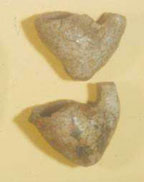

Click to view larger images of crucibles and moulds.
Glass-working
Heating trays with yellow glass, a lump of raw blue glass and a failed ornate glass and metal stud show that glass-working was a part of the Tarbat repertoire. Ornate one-piece moulds were used to cast the molten glass to make decorative studs which may have embellished the covers of manuscripts similar to the Book of Kells. Early medieval glass working is almost unknown in Scotland and the Tarbat assemblage is unique in its importance.

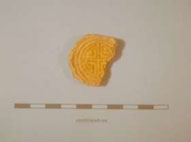
Click to view larger images of moulds.
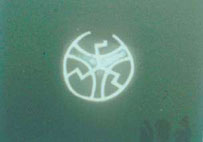
Click to view larger image of x-ray of glass stud.
Leather-working
It is clear from the quantity of hoof bones from cattle that some sort of leather working was taking place at the Tarbat monastery. Large spreads of burnt seaweed ash and crushed shell may have come from a white tanning agent used to make vellum. A crescent shaped iron leather- working knife has been found alongside pumice rubbers. All of these signal leather-working was taking place and from the nature of the pumice rubbers and the tanning agent it may be that the workshop was quite specialised.
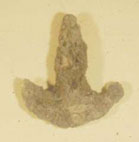
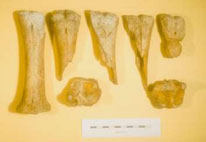
Click to view larger images of knife and bones.
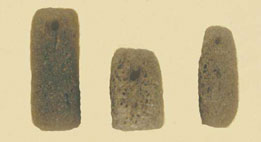
Click to view larger images of pumice rubbers.
Wood-working
Many of the buildings and postholes excavated at Tarbat suggest that timber building was of prime importance and that highly skilled carpenters were involved. A wet preserved timber was finely finished and chamfered indicating that timbers were dressed by skilled craftsmen. A long handled woodworking chisel was found on a workshop floor. Trapped in its corrosion layers was evidence for wood shavings suggesting that a lathe may have been in use. The possibility that wooden bowls and jars may have been a product might explain the near complete absence of early medieval pottery at the site.
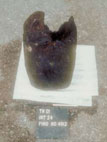
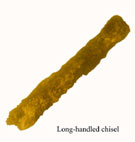
Click to view larger images of timber and chisel.
The right to claim the excavation assemblage from the Tarbat Discovery Programme has been exercised by the Queen's and Lord Treasurer's Remembrancer and the assemblage has been allocated to the National Museums of Scotland. Finds from the Tarbat Discovery Programme are periodically declared to the Treasure Trove Panel. The assemblages are studied at the Department of Archaeology, University of York in partnership with the National Museums of Scotland. Some material from current excavations has been kindly loaned by the National Museums of Scotland to the Tarbat Discovery Centre.
Last updated 10 October, 2003.
Contact the Tarbat Discovery Programme


